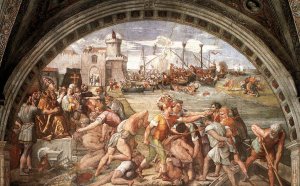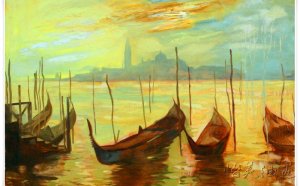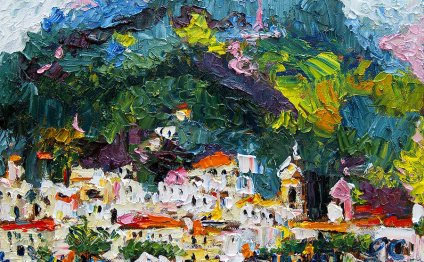
Oil Paintings of Italy
 Jan Van Eyck is the Flemish painter often credited as the first master, or even the inventor of oil painting. That he was an early master of the oil painting medium is certainly true. It is certainly untrue that he invented the technique.
Jan Van Eyck is the Flemish painter often credited as the first master, or even the inventor of oil painting. That he was an early master of the oil painting medium is certainly true. It is certainly untrue that he invented the technique.
In fact painting with oil dates as far back as the Indian and Chinese painters of the fifth century however Van Eyck was one of the earliest masters of the technique.
His use of oil paints in his detailed panel paintings, typical of the Netherlandish style, resulted in him being known as the father of oil painting.
Van Eyck's date of birth is unclear, c.1395 or sometime before this date is widely accepted as a best guess. Almost nothing is known of his early life but we do know that he entered the service of Philip the good, Duke of Burgundy in 1425.
The artist was held in high esteem by the Duke who was godfather to his son. Philip also paid a salary to Van Eyck, this was very unusual as most artists of the period relied on individual commissions for their livelihoods.
When the artist's salary became the subject of a dispute, Philip wrote to his treasurers stating, 'we could find no other artist to our liking who is so accomplished in his art and science', a measure of the artists value to the Duke.
 The Arnolfini Marriage Portrait, Oil on panel. 82 × 59.5 cm (32.28 × 23.43 in), 1434,
The Arnolfini Marriage Portrait, Oil on panel. 82 × 59.5 cm (32.28 × 23.43 in), 1434,
National Gallery, London. (w)
(Detail) (s)
This detail of the convex mirror on the wall in the background of the painting shows the backs of the betrothed and also two more people. The ten small circles surrounding the the mirror each contain a tiny scene from the passion of Christ. It is a fine piece of the miniaturist technique and quite brilliant in its execution.
The inscription above the mirror reads, ' Johannes de Eyck fuit hic 1434', 'Jan Van Eyck was here 1434'.
An early example of graffiti, or simply an elaborate signature by a fine artist?
You can purchase a copy of this work through
This panel painting is famed for being one of the first to be executed in oil's rather than in the standard tempera method of the period. The detail and the use of light to evoke the interior of the room was considered remarkable and revolutionary for its time. The sitter is possibly Giovanni Arnolfini and his pregnant wife. Giovanni was an Italian merchant resident in Bruges and the painting represents a betrothal in the bedroom of their home with beautifully observed details such as the chandelier and convex mirror.
 Man in a Red Turban. 1433 National Gallery London. (s)
Man in a Red Turban. 1433 National Gallery London. (s)
Often regarded as a self portrait of the artist.
Margaret Van Eyck. (the artist's wife) 1434 Groeningemuseum, Bruges. (s)
Madonna of Chancellor Rolin. 1435, Louvre, Paris. (s)
Rolin was an administrator and the chief servant of the Duke. He is shown kneeling opposite the Virgin who sits with her Child on her knee. An angel holds a crown above her head and the figures are placed in a space enclosed by Romanesque arcading. The view through the back of the arcade reveals a minutely painted landscape executed with the detail typical of Flemish painting.
The Ghent Altarpiece, 1432. Oil on panel, Saint Bavo Cathedral, Ghent. (w)
This, almost medieval panel, was produced by Hubert Van Eyck (Jan's less well known brother) and completed by Jan Van Eyck, a joint enterprise by the two artists.
Ghent Altarpiece (closed) (w)
All of the known works of Jan Van Eyck are from the period within his service to Philip of Burgundy. He was a learned man who spoke Latin, he was also well versed in the classics. The artist remained as well respected member of the court of Burgundy until his death in 1441.




YOU MIGHT ALSO LIKE
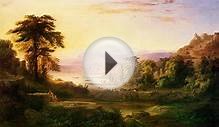
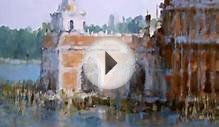
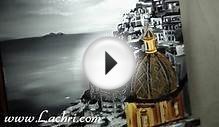
Share this Post
Related posts
Paintings of the Renaissance period
We all know what the Renaissance was, correct? Michelangelo, Leonardo, Raphael and company created some fabulous paintings…
Read MoreItalian oil Paintings
Fresco painting has been around for a very long time, examples of fresco painting techniques date back to at least 1500 BC…
Read More
